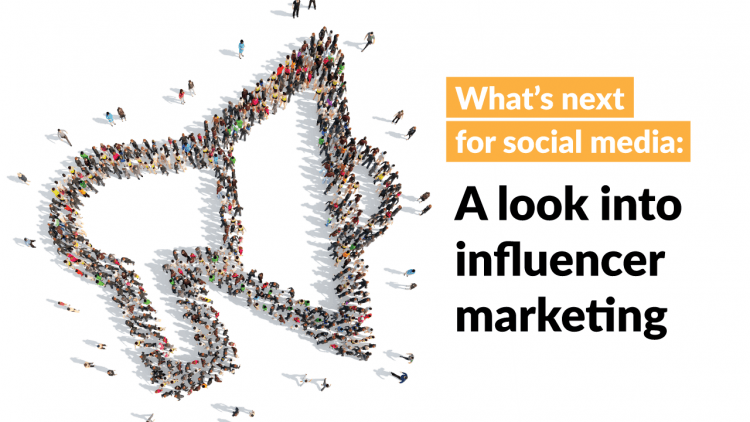Influencers Are The Vital Signs Of Your Brand
Today, brands are playing catch-up on social media. As platforms continue to build features to increase attention, more formats to drive storytelling and analytics to hone in on strategy, brands are often the ones adapting at a much slower pace. Corporate teams know this as well. Instagram, which partners with my company Dovetale, is running brand/agency-specific programming to teach social media managers how to extract value from stories. Snapchat has run private, invite-only events to educate agency folks/mobile app-centric companies on best practices, and YouTube has invested in countless brand workshops, conferences and more.
We know that attention is at the center of branded strategies on social media. The constant consumer obsession with social media is why we see brands investing millions of dollars in advertising, strategies, technology and content. After several years and the meteoric rise in the popularity of platforms like Instagram, it’s been hard to avoid influencer marketing. Influencers themselves represent a weird trichotomy of content, influence and strategy. Some brands just want to piggyback on their influence with a more “pump-and-dump” strategy to increase sales. Some want to acquire content, and the rare, yet savvy, brand will look to influencers/creators for their creative opinion.
“Influencer marketing,” while a terrible term for a generalist strategy of syndicating stories with influencers, has significant upside for brands. This is where the whole authenticity angle comes in and where technologies like machine learning can help. Brands that are acutely aware of this end up generating higher returns on investment and better partnerships with influencers. An influencer can technically be anyone who influences a decision, but let’s say for argument’s sake that we define an influencer as someone who has a focused categorical audience and more than 5,000 followers. If attention is the currency of your brand on social media, then brands should be able to keep a pulse on metrics that define this. This means that when an influencer organically gives you a shoutout, you can attribute a dollar amount to it. Some of the most successful brands know this. They create entire ecosystems and experiences optimized for consumers/influencers to share. For example, Bumble launched a physical space in New York for dates, and Outdoor Voices created a virtual store.
No doubt these are expensive marketing tactics, but when we break down why, it’s clear that the brands that are returning big dollars are the ones that are optimizing for influencer interactions. Influencers propagate the core message and lead to network effects inside of social media. The strongest brands have the most organic/authentic influencer content, and they likely don’t pay for a lot of it. Often, I tell brands that you need to create a war room of the most important metrics that drive success on social media. Technology teams should also be involved, as some of these metrics are not trivial to obtain. The best technology teams in marketing are obtaining large data sets and running machine learning models to extract insights. Metrics such as engagement or likes and comments are simply not enough in an age defined by social media. Technology and marketing teams are utilizing core concepts in image recognition and using software to tactically enhance performance. The best war rooms look for fake audiences, true engagement as a function of sales and returning consumer behavior tracked through customer solutions.
Pairing powerful technologies used to monitor user-generated content (UGC) and, more importantly, the amount of influencer-generated content (IGC) is often one of the most important metrics to follow when determining the success and vital signs of a brand. Additionally, as social platforms build smarter content algorithms, it will be important to have influencers engaging with content (not just posting). For a long time, we’ve speculated that social media platforms weigh likes and comments from influencers more than engagement from your friends, simply because aspirational content performs better. There’s some evidence for this, like when Mark Zuckerberg said that Facebook is going to focus more on showing you content from your friends and family.
Brands and now technology teams are vetting the barrage of influencer platforms to kick-start their influencer marketing and/or content marketing efforts. That’s fine, but they often miss the long game. Influencer marketing and creative contractor management are two separate things. One is more of a sales process, and the other is akin to an employer-employee relationship. If done right, the brand can be at the center of the story while a network of creative content makers can live around it. This self-fulfilling strategy is hard to start and maintain, although it has a big upside. The influencer marketing industry has ballooned to a multibillion-dollar industry, and according to my own calculations, individuals with “influencer marketing” in their title header on LinkedIn have grown more than 75% since last year.
In general, brands and agencies need to re-prioritize their emphasis on technology and treat their content creator/influencer strategies as day-to-day tasks that need to be constantly monitored. With this centered approach, brands can mimic the strategies of large publishers and create an ecosystem of digital storytellers around them, similar to the editors of large magazines. The realization that brands are becoming media companies is a profound turning point and will soon require us to rethink the paradigm behind brand-building altogether.
Article written by: Mike Schmidt
0


